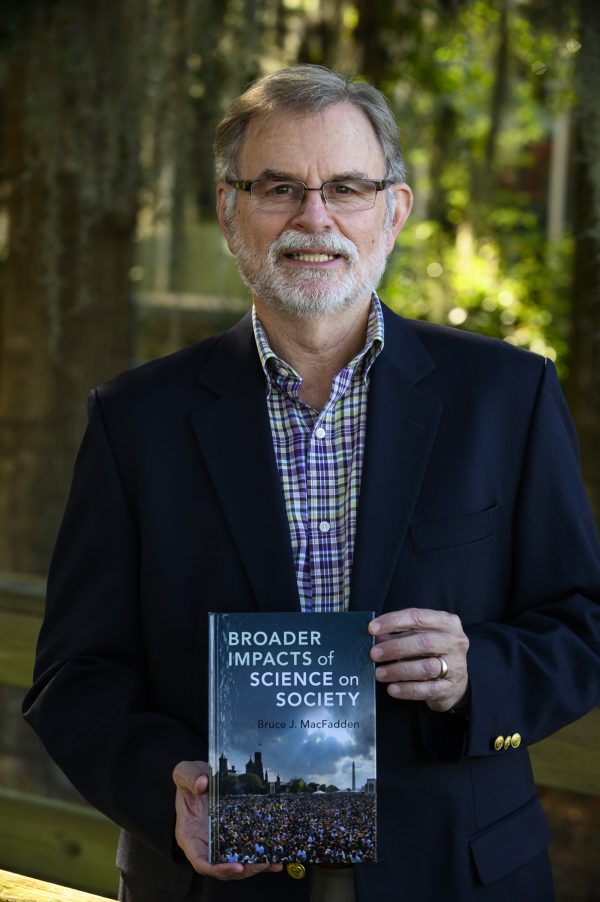Scientists are increasingly breaking away from the lab or leaving their computer screens to talk to the public about their research. But making the leap to visiting school classrooms, engaging laypeople in fieldwork and presenting at community forums can be daunting. How to begin?
A new book by Florida Museum of Natural History paleontologist Bruce MacFadden can help.
“Broader Impacts of Science on Society” provides scientists with a how-to guide for educational and outreach activities, drawing on MacFadden’s five decades of working with teachers, schoolchildren, community scientists and local fossil clubs.
In particular, the book helps scientists think critically about the “broader impacts” section of grant proposals for the National Science Foundation, the primary funding agency for discovery-based research in the U.S. Broader impacts are weighed equally with a project’s intellectual merit in the NSF evaluation process, but are often poorly understood by the scientific community, MacFadden said.

Florida Museum photo by Jeff Gage
“As scientists, we have a responsibility to give back to society,” said MacFadden, who is also a University of Florida distinguished professor. “I feel passionately about the fact that broader impacts should be embraced by the scientific community and wanted this book to be a guide or case study for scientists who are looking for best practices.”
MacFadden wrote the book based on his experience – both successes and misfires – communicating with the public and as a principal investigator who has secured 50 NSF grants totaling more than $35 million. He also previously served as an NSF program officer and led professional development training for grant writers.
From the earliest days of his career, MacFadden was drawn to engaging the public with science. He spent seven years leading the Florida Museum’s Exhibits and Public Programs Division, which provided him ample opportunity to learn what sparked and held people’s interest. He also directs the UF Thompson Earth Systems Institute, which aims to communicate environmental science to a lay audience.
One of the most common mistakes scientists make is thinking that the broader impacts section of a grant proposal doesn’t matter, MacFadden said.
“The old culture is ‘I’m doing really good work. That’s the important thing, so I deserve funding. We can fit broader impacts in on the side.’ That mindset won’t fly with funding agencies anymore,” he said. “Now the culture is changing, and the next generation of graduate students understands why societal outreach is important.”
While the book’s core audience is the 50,000 principal investigators who submit proposals to NSF each year, MacFadden said its principles and practical advice provide a primer to any scientist in need of guidance on brainstorming, planning and carrying out effective research outreach activities.
In the book’s last chapter, he outlines the outreach area he sees as having the most potential for growth – increasing diversity in the sciences.
“What we have to look forward to is the importance of including everyone, from any kind of background, in the enterprise of science,” he said.
“Broader Impacts of Science on Society” is now available from Cambridge University Press.
Source: Bruce MacFadden, bmacfadd@floridamuseum.ufl.edu, 352-273-1937